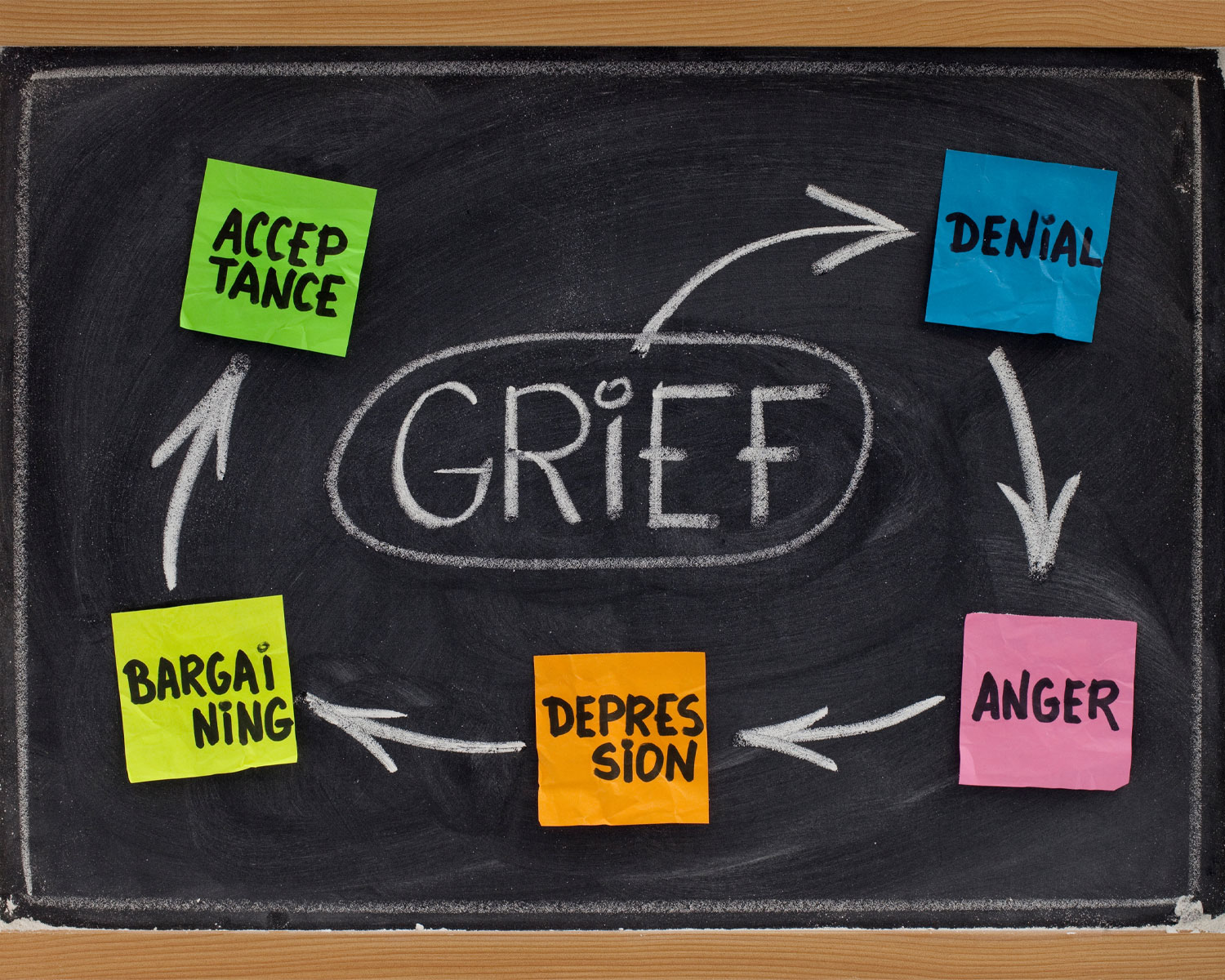
Grief: The Five Stages and What to Expect
Grief is an inevitable part of life — something we all experience at some point, whether from the loss of a loved one, the end of a meaningful relationship, or another significant change. Grief is deeply personal, and everyone processes it differently.
Psychiatrist Elisabeth Kübler-Ross developed the Five Stages of Grief model to help people understand the emotions they may experience during the grieving process. These stages don’t follow a set order and can surface unexpectedly, sometimes more than once. Knowing what to expect can help you better navigate this challenging time.
Stage 1: Denial
Denial is a common and natural defense mechanism. When faced with a painful loss, your mind may initially refuse to accept what has happened. This response acts as a buffer, giving you time to gradually process overwhelming emotions.
You may catch yourself thinking:
- “This can’t be real — they’ll be home soon.”
- “It doesn’t feel like they’re gone.”
As denial fades, suppressed emotions can rise to the surface. This is a normal part of healing, even if it feels difficult at first.
Stage 2: Anger
Anger often masks deeper feelings of pain. It’s not unusual to direct your frustration toward others — even the person you’ve lost — or to blame unrelated factors, such as circumstances, healthcare providers, or substances (e.g., drugs if a loved one passed due to overdose).
Your logical mind may know these reactions aren’t entirely fair, but your emotions are still valid. Anger can manifest as:
- Irritability or rage
- Outbursts or resentment
- Feelings of injustice or betrayal
With time, anger tends to subside, allowing space for more rational thought and emotional processing.
Stage 3: Bargaining
In this stage, it’s common to reflect on what you could have done differently. You may dwell on thoughts like:
- “If only I had called more often…”
- “Maybe if I had convinced them to seek help…”
Some may also turn to spirituality, offering promises or “deals” in hopes of reversing their loss or lessening their pain. Bargaining is often an attempt to regain control during a time of emotional vulnerability.
Stage 4: Depression
Depression is a natural response to grief, though it may present differently for each person. You may experience:
- Persistent sadness or crying spells
- Isolation or withdrawal from others
- Brain fog or difficulty concentrating
- Loss of energy or motivation
- Changes in appetite or self-care routines
While painful, these emotions are an important part of grieving. Allowing yourself to experience sadness is often key to long-term healing.
Stage 5: Acceptance
Acceptance doesn’t mean your grief has ended or that you’ve forgotten your loss. Rather, it reflects your ability to face reality, adjust to life without what (or whom) you’ve lost, and find meaning moving forward.
Even after reaching acceptance, you may still experience waves of sadness. Grief isn’t linear, and healing takes time.


Navigating the Grieving Process
It’s important to remember:
- There’s no “right” way to grieve. People move between stages in different orders and may revisit certain stages multiple times.
- Suppressing grief often prolongs the process. Allow yourself to feel these emotions as they arise.
- If you find yourself stuck in any stage, relying on unhealthy coping strategies, or feeling overwhelmed, seeking support is a sign of strength.
If you’re struggling to manage grief, reaching out to a mental health professional can provide guidance, support, and relief. Therapy, medication, or a combination of both can help you process your emotions in a healthy way.



